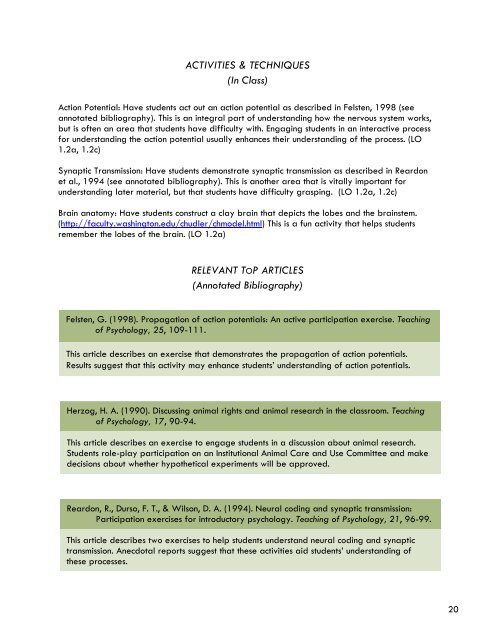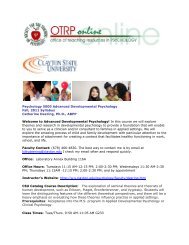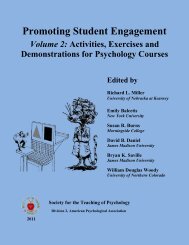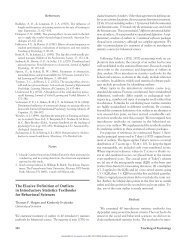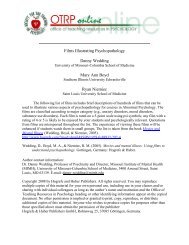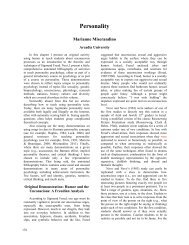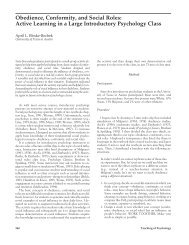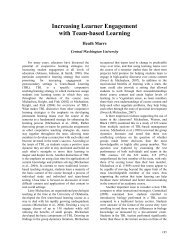INTRODUCTORY PSYCHOLOGY TEACHING PRIMER Early Career ...
INTRODUCTORY PSYCHOLOGY TEACHING PRIMER Early Career ...
INTRODUCTORY PSYCHOLOGY TEACHING PRIMER Early Career ...
Create successful ePaper yourself
Turn your PDF publications into a flip-book with our unique Google optimized e-Paper software.
ACTIVITIES & TECHNIQUES<br />
(In Class)<br />
Action Potential: Have students act out an action potential as described in Felsten, 1998 (see<br />
annotated bibliography). This is an integral part of understanding how the nervous system works,<br />
but is often an area that students have difficulty with. Engaging students in an interactive process<br />
for understanding the action potential usually enhances their understanding of the process. (LO<br />
1.2a, 1.2c)<br />
Synaptic Transmission: Have students demonstrate synaptic transmission as described in Reardon<br />
et al., 1994 (see annotated bibliography). This is another area that is vitally important for<br />
understanding later material, but that students have difficulty grasping. (LO 1.2a, 1.2c)<br />
Brain anatomy: Have students construct a clay brain that depicts the lobes and the brainstem.<br />
(http://faculty.washington.edu/chudler/chmodel.html) This is a fun activity that helps students<br />
remember the lobes of the brain. (LO 1.2a)<br />
RELEVANT TOP ARTICLES<br />
(Annotated Bibliography)<br />
Felsten, G. (1998). Propagation of action potentials: An active participation exercise. Teaching<br />
of Psychology, 25, 109-111.<br />
This article describes an exercise that demonstrates the propagation of action potentials.<br />
Results suggest that this activity may enhance students’ understanding of action potentials.<br />
Herzog, H. A. (1990). Discussing animal rights and animal research in the classroom. Teaching<br />
of Psychology, 17, 90-94.<br />
This article describes an exercise to engage students in a discussion about animal research.<br />
Students role-play participation on an Institutional Animal Care and Use Committee and make<br />
decisions about whether hypothetical experiments will be approved.<br />
Reardon, R., Durso, F. T., & Wilson, D. A. (1994). Neural coding and synaptic transmission:<br />
Participation exercises for introductory psychology. Teaching of Psychology, 21, 96-99.<br />
This article describes two exercises to help students understand neural coding and synaptic<br />
transmission. Anecdotal reports suggest that these activities aid students’ understanding of<br />
these processes.<br />
20


